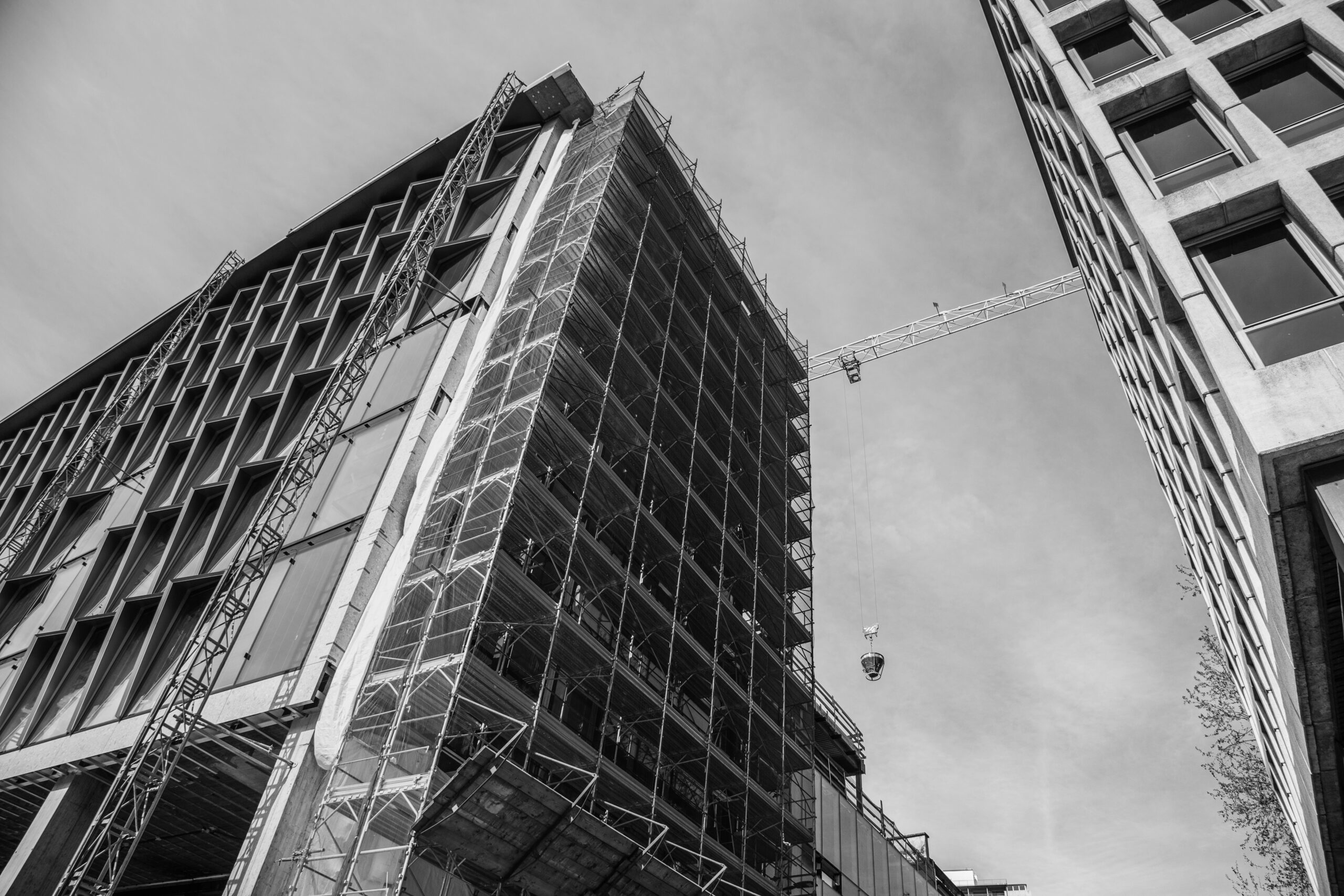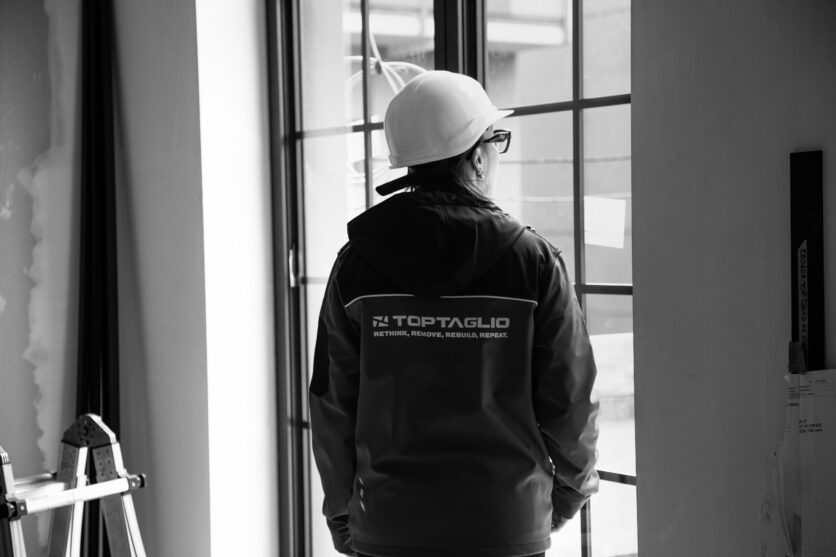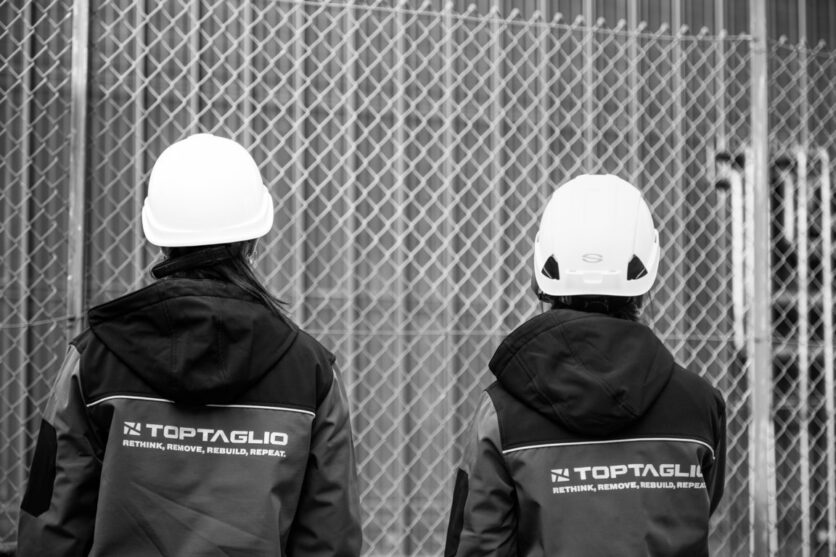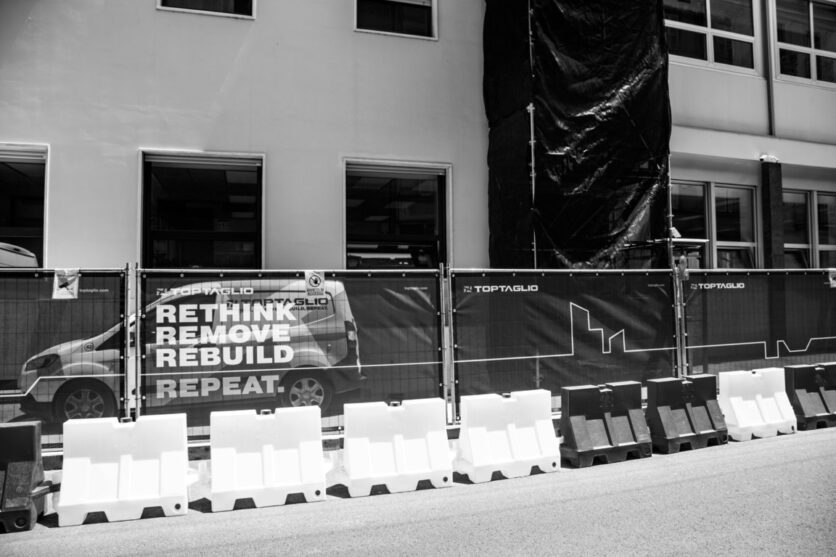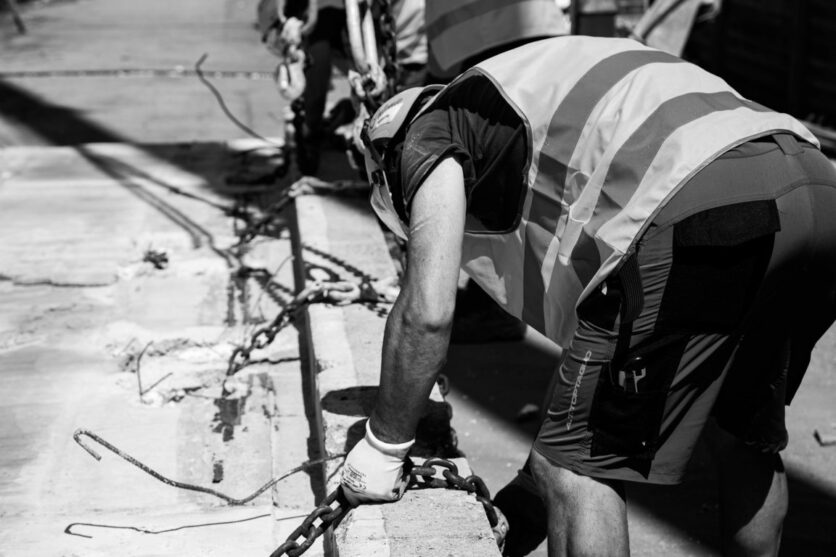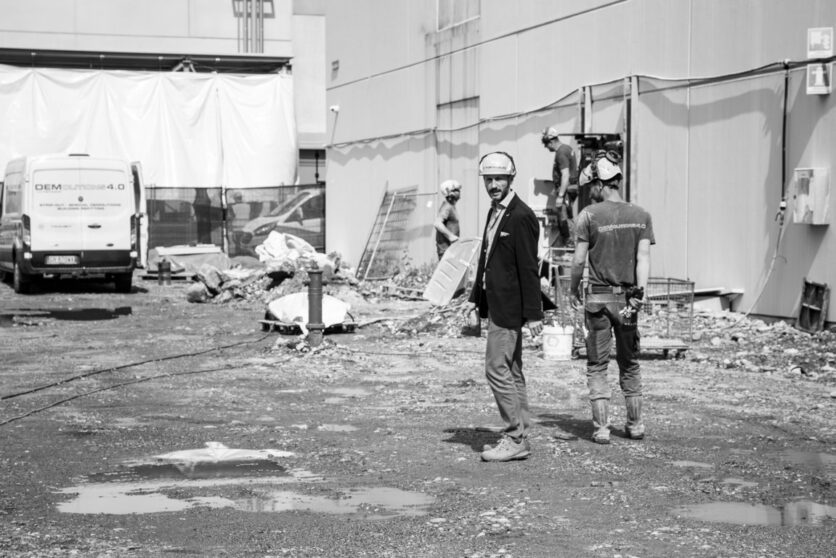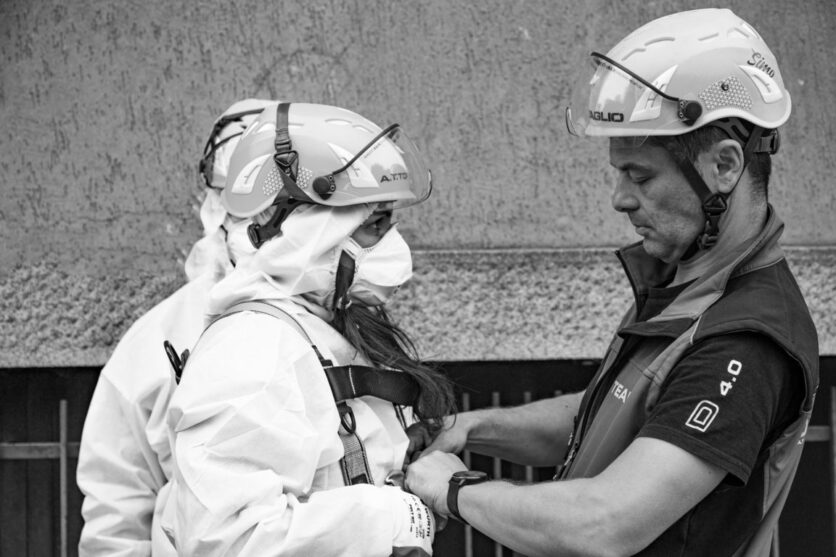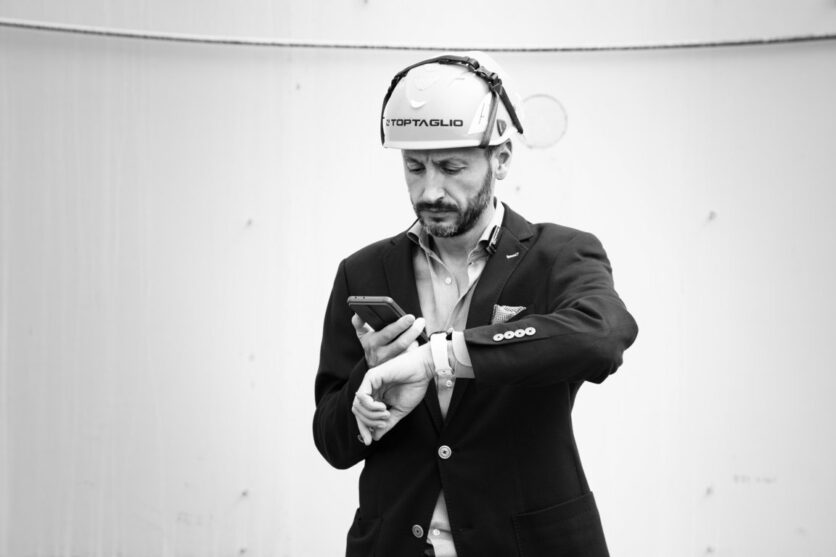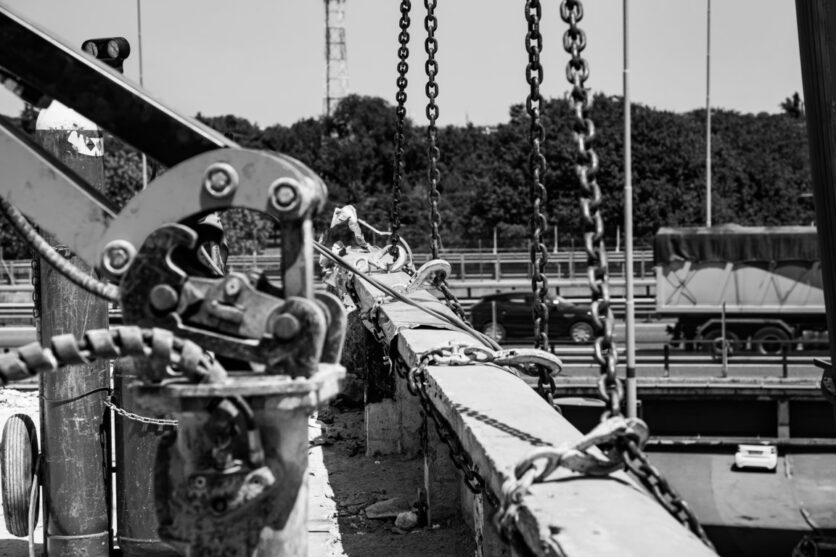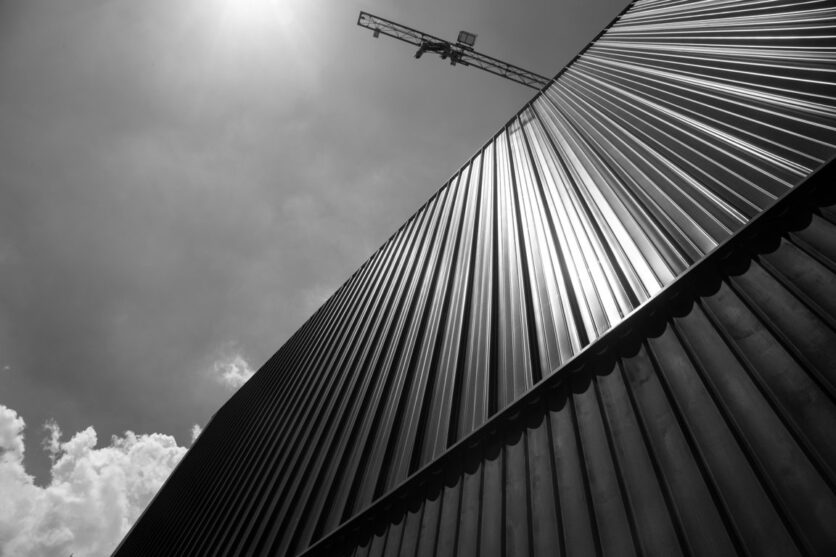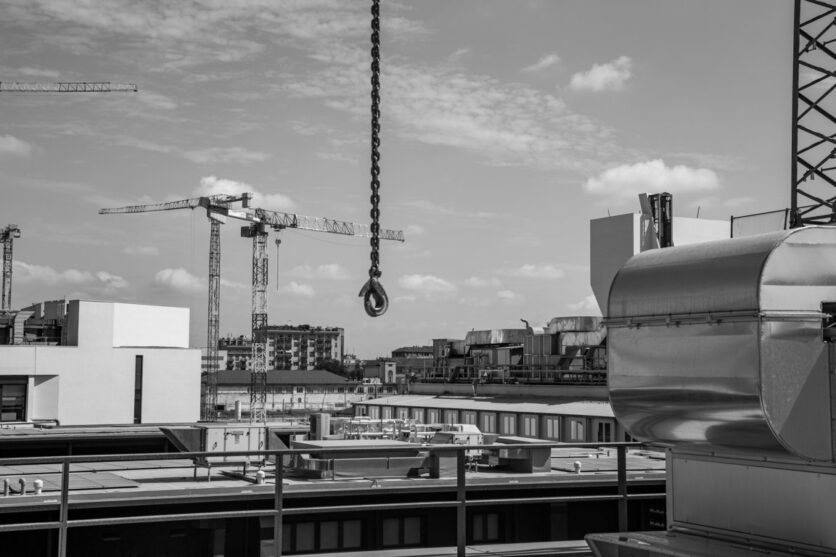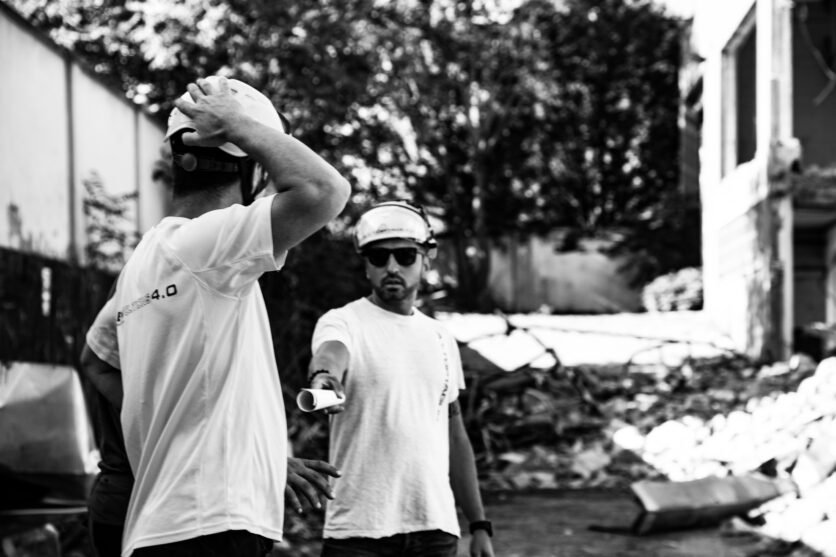Sustainability and construction are critical to environmental health and the future of the planet. These issues should be examined from multiple perspectives, with design being one of the most interesting and, arguably, a top priority.
TOPTAGLIO, a General Contractor specialising in building redevelopment operations, has always had a strong focus on design, building on its many years of experience in demolition: “A sustainable design approach involving demolition and new construction must take into account the entire project life cycle,” says Engineer Alessandro Reggiori, Commercial Director of TOPTAGLIO, “starting from the reduction of waste in the demolition phase, to the choice of efficient materials and construction techniques, and ending with the reduction of impact on the environment and the community in the long term. This is a crucial issue for the future of architecture and town planning“.
Building and redevelopment today: the importance of sustainable design
Building and redeveloping today already means imagining what the future of what you want to realise will be. ‘The sustainable design of a building,” says Alessandro Reggiori, “is the one that allows the greatest reuse of materials and structures, where easy assembly and reassembly plays a fundamental role. We often see new buildings constructed, for example, with materials, insulators or structures that are unlikely to allow for the modifications or readjustments necessary in the future. Our experience has taught us this. In our redevelopment projects, particularly during the demolition phase, we try to destroy and throw away as little as possible, but above all to reuse what is already there. The moment we build, we are already thinking about tomorrow, about when, that is, we will need to rebuild that building. Yes, because that moment inevitably comes: every building has a lifespan and our goal is to make it as long-lived as possible, extending its life to the maximum. We have to be aware of how much a design approach that does not value the future recovery of the building, its parts or its materials, can be impactful from an ethical, environmental and sustainable point of view”.
It is part of TOPTAGLIO’s philosophy and DNA to construct and renovate buildings that can last over time, thanks to the use, and reuse, of high quality materials and the adoption of construction techniques that allow for easy maintenance. “We always take into account the fact that a building designed in a truly sustainable manner,” concludes engineer Reggiori, “not only has low running and maintenance costs, both in terms of energy consumption and structural work, but is also more durable, thus reducing the need for new demolition and construction in the future. This is the goal that is closest to our company’s heart“.
Extending the useful life of products and materials already at the design stage
In sustainable design, it is a priority to consider the entire life cycle of materials, from production to recycling or reuse. Buildings that are designed without considering the life cycle may seem economical at first, but in the long run often generate significant costs for maintenance, renovation or demolition. Neglecting recovery and reuse therefore means limiting the effectiveness of life cycle management, as materials are treated as disposable instead of being reintegrated into new production cycles. This inevitably leads to an increase in waste from the demolition and decommissioning of buildings.
‘The construction and demolition industry generates a considerable amount of waste, such as concrete, steel, glass, wood, which, even if recovered through recycling, still involves energy consumption, as well as the production of new materials, contributing to resource depletion and pressure on ecosystems” continues engineer Reggiori “This is why the best way is still recycling and reuse, thanks to which we can significantly reduce the embodied energy needed to refurbish a building or part of it. The entire life cycle of a building must always be taken into account: from raw materials to construction, use and up to the end of its useful life. Designing buildings with disassembly in mind and the possibility of reusing components therefore reduces the overall energy impact of the project life cycle“.
Reuse, recycling and recovery, as the circular economy teaches us, are fundamental tools to reduce environmental impact and support sustainable economic growth.
Sustainable design and artificial intelligence
The advent of artificial intelligence (AI) in the construction industry promises to radically transform the way buildings and infrastructure are designed, constructed and managed. Its applications range from initial planning to resource management, from real-time monitoring to safety and predictive maintenance. AI will increasingly be of great help for sustainable design, as it will become the ideal tool for optimising building projects by analysing large amounts of data and creating advanced simulations. AI-powered software will increasingly be able to generate multiple design options, considering factors such as climate, terrain, sustainability, costs and local regulations. This will enable designers to make more informed decisions, improving energy efficiency and reducing material waste.
The AI embedded in BIM (Building Information Modeling) software, for example, will enable more efficient management of all phases of a building’s life cycle, from design to construction and maintenance. Moreover, thanks to AI and IoT sensors, buildings and infrastructure will be able to be monitored in real time. Artificial intelligence will be able to detect potential problems such as structural failures, water seepage or system failures before they become serious, triggering predictive maintenance interventions and preventing costly damage.
“How does TOPTAGLIO see the future with the advent of artificial intelligence in the construction industry? ” continues engineer Reggiori “In the design phase of any urban regeneration project, analysing advantages and disadvantages takes time, which also affects the economic investment. Artificial intelligence tools will be able to help us generate, in less time, alternative solutions that will speed up decision-making processes, favouring more sustainable choices and avoiding the errors that come from haste and habits. We will thus be able to evaluate, more quickly and effectively, alternatives that are more suitable and functional for the redevelopment project“.
Sustainable design, AI and reducing environmental impact
AI will increasingly play a crucial role in the construction of sustainable and environmentally friendly buildings. By analysing large climate and environmental datasets, AI will be able to suggest greener materials and construction methods. In addition, advanced energy management systems will be able to optimise energy consumption within buildings. ‘I am certain,” says engineer Reggiori, “that the future of the construction industry will be characterised by greater efficiency, sustainability and safety thanks to the advent and evolution of artificial intelligence. The use of advanced technologies will improve the quality of work, reducing costs and minimising risks. AI will help minimise the ecological footprint of buildings through dynamic optimisation of resources such as energy, water and materials, making buildings more efficient and self-sufficient. However, it will be crucial to address the challenges of training the workforce and integrating new technologies into traditional processes”.
AI, material separation and waste management
What happens with materials that can be recycled or reused? Artificial intelligence can also be used to improve the classification and separation of materials during and after demolition. Thanks to sensors and cameras equipped with AI, it is possible to recognise the different elements such as concrete, metal, wood and plastic in waste. Furthermore, using machine learning algorithms, it is possible to classify them to facilitate recycling. Robotic systems, integrated with AI, can be programmed to autonomously separate materials that can be recovered from those that must be disposed of. These robots can distinguish materials based on images, textures and other physical characteristics.
Another important aspect is waste prediction: by analysing historical data on demolition projects, AI can predict the amount and type of waste that will be generated in a specific project. This helps in the planning of recycling and recovery. In addition, AI systems can be used to optimise transport and sorting routes for recovered materials, reducing CO2 emissions and operational costs.
“Undoubtedly,” concludes engineer Reggiori, “experience is crucial, as it helps to dictate a line, but artificial intelligence can be valuable if used in the right way, as it simplifies the process and facilitates the final choice. This is an important consideration for the present, but especially for the future“.


